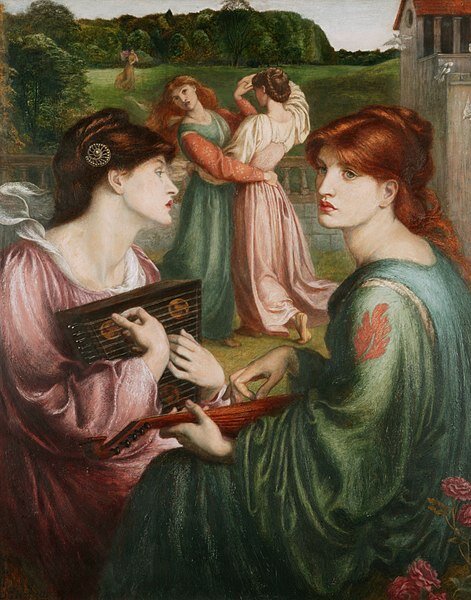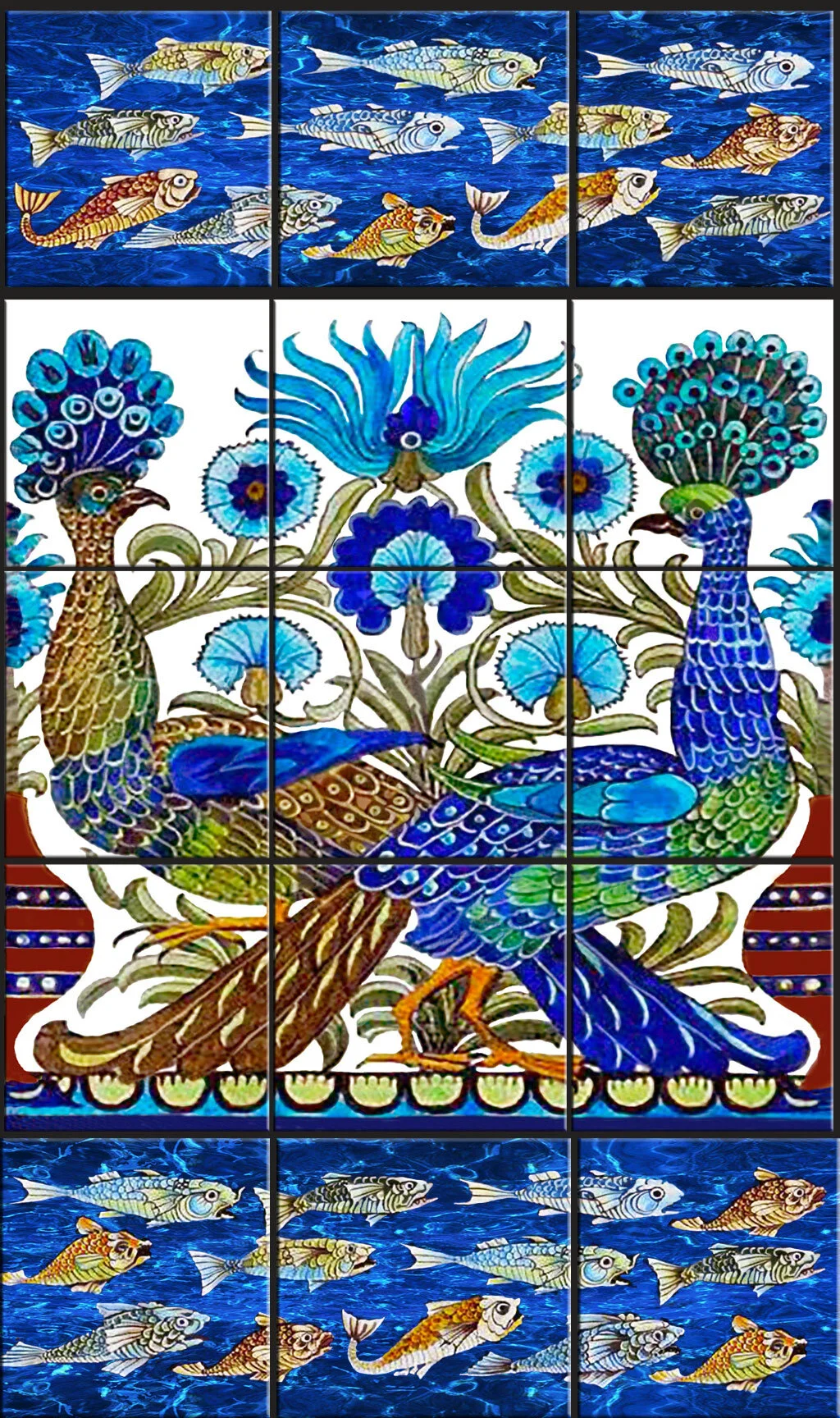La Danseuse Creole, 1965 by Henri Matisse.
As he was losing his eye sight, Matisse continued to work late in his career creating works (particularly collages) out of bits and pieces of color and shape.
Your Custom Text Here

La Danseuse Creole, 1965 by Henri Matisse.
As he was losing his eye sight, Matisse continued to work late in his career creating works (particularly collages) out of bits and pieces of color and shape.

Detail, Taj Mahal, built between 1631 and 1654, India
Shah Jahan the emperor of the Mughal Empire built this monument to his favorite wife Mumtaz Mahal. This detail of a marble decorative frieze.


Susanna Fourment and her Daughter, 1621 by Anthony van Dyck, The National Gallery of Art.
A popular subject - Susanna appears again in another 17th century court painting by Anthony van Dyck.

Portrait of Susanna Lunden or Le Chapeau de Paille (The Straw Hat), 1622-25 by Peter Paul Rubens, National Gallery, London.
A portrait of Rubens' sister-in-law, who was widowed by the time this was painted. Her sister was Rubens' second wife. Rubens' was the most famous and popular painter of the 17th century. His paintings of full-figured females have spawned the term "rubenisque" to describe voluptuous figures.

The Trappers Return, 1851 by George Caleb Bingham, Detroit Institute of Arts.
Bingham made a living painting portraits early in his career as an artist, but eventually switched to genre paintings like this. In this version you can see more of a resemblance to a bear cub.

Fur Traders Descending the Missouri, 1845 by George Caleb Bingham, The Metropolitan Museum of Art.
Bingham studied art in the US and in Europe, he lived in Missouri where his family had moved when he was a child. Bingham eventually took up a life in politics. Some experts differ as to the animal with the collar in the front of the boat. Some say it is a cat and some a bear cub.

The Prison, plate VII, c. 1760 by Giovanni Battista Piranesi.
Piranesi was always very interested in architecture as his etchings prove. He set about recording the many great monuments and the architecture of Rome.

Archduke Leopold Wilhelm in his Gallery at Brussels, c. 1651 by David Teniers.
We are so used to seeing large expanses of wall surrounding works of art, but that is really only a 20th century method of hanging paintings, for years it was done like the gallery in this painting - floor to ceiling, stacked on top of each other.

Paul Helleu Sketching with his Wife, 1889 by John Singer Sargent, The Brooklyn Museum, New York.
Rather than the more formal portraits for which he is better known, in this piece we see a portrait by Sargent, but in a casual setting.

The Lamentation by Giotto di Bondone, Scrovegni Chapel, Padua.
The emotion and naturalism found in Giotto's 14th century frescos are among the reasons he is considered one of the founders of modern painting and his style paved the way for the artists of the Renaissance to follow. His understanding of space and the use of the landscape as a means to lead the viewer to the primary action in the scene, was revolutionary.

Acrobat and Young Harlequin 1905 by Pablo Picasso, The Barnes Foundation.
Painted in 1905 this work is part of Picasso's Rose Period that The Barnes Foundation .came after his Blue Period. His subjects during this time often included acrobats dancers and harlequins.

Roycroft Campus, East Aurora NY
Much like Byrdcliffe, Roycroft was started as a self-contained Utopian community where its founder Elbert Hubbard envisioned a society of artists and crafts people living and working in harmony. It is a lovely place to visit and the Roycroft Inn is an Arts and Crafts lover’s paradise.

Book about Byrdcliffe
Dragonfly Wallpaper, c.1905 by Zulma Steele, Byrdcliffe Arts and Crafts Colony, Woodstock NY, Private Collection.
Byrdcliffe was a Arts and Crafts Colony started by Jane and Ralph Whitehead as a Utopian community based on the ideals and writings of John Ruskin and William Morris, where like-minded artists, craftspeople, writers and architects could gather, share and practice their crafts.

Beata Beatrix, 1872 by Dante Gabriel Rossetti, The Art Institute of Chicago.
This is a portrait of Rossetti's wife Elizabeth Siddal that was painted after her death. In it he casts her as Dante's Beatrice, thereby casting himself as his namesake. When Siddal died he was so overcome with grief he buried his manuscript book of poetry along with her (five years later he retrieved it).

The Bower Meadow, 1850-1872 by Dante Gabriel Rossetti, Manchester City Art Galleries, UK.
Begun in 1850 the background is Knole Park, Kent which he painted out of doors with William Holman Hunt. The Pre-Raphaelites advocated painting out of doors in natural settings, but this is the only time Rossetti ventured down that road. He completed the figures in 1872.

The Day-dream, 1880 by Dante Gabriel Rossetti, Victoria and Albert Museum, London.
The model in this piece, Jane Morris is the wife of William Morris and it is a widely held belief that Rossetti and Jane carried on an affair.

La Belle Iseult, 1858 by William Morris, The Tate Modern, London.
The model for this work is Jane Burden who later became the wife of William Morris and lived with him at Red House. Note his emphasis on the design and detail in the room, he later gave up painting in favor of interior design and was very successful with Morris & Co.

Pewabic Pottery in the Guardian Building, Detroit
Detail from Pewabic Pottery tile decoration from the Guardian Building, 1928, Detroit MI.
Mary Chase Perry Stratton and her partner Horace Caulkins founded the Pewabic Pottery based on the Arts & Crafts style and ideal sweeping the country. The building they built in 1907 they moved to the building that still houses an active pottery, museum and store.

Pewabic Pottery Tiles the Guardian Building, Detroit.
I received this fantastic book as a gift and had to re-post the Guardian Building. Anyone who is into architecture will love it and Detroiters need to see it to appreciate gems in that city (before they disappear).

Fruit Still Life in a Landscape, c. 1872 by Severin Roesen, Los Angeles County Museum of Art.
Now that is a selection of fruit.

Peacock Tile Panel by William De Morgan, Formally The Peacock House now run by the Richmond Fellowship, London.
William De Morgan became involved with the Pre-Raphaelite movement through William Morris. Morris, Burne-Jones and others were interested in medieval decoration for their homes and De Morgan's tiles were the perfect addition.